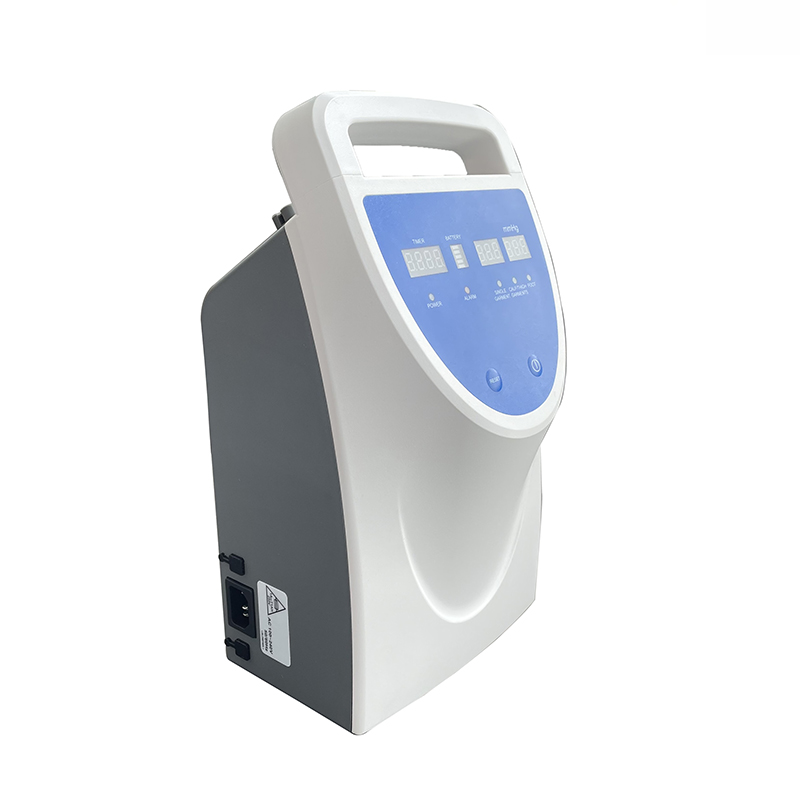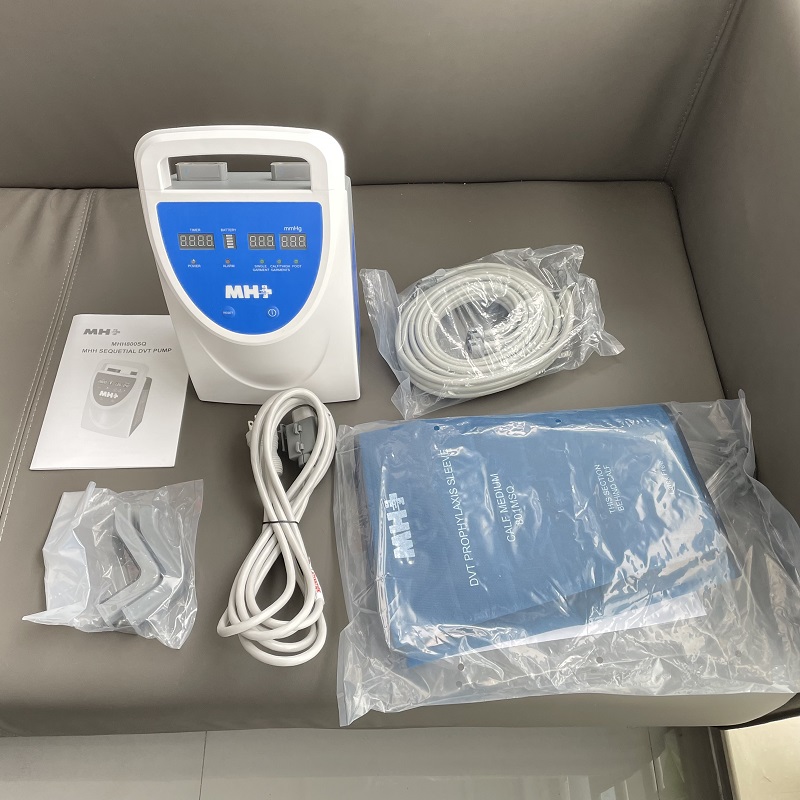Deep vein thrombosis (DVT) is a serious medical condition where blood clots form in the deep veins, most commonly in the legs. It can lead to severe complications such as pulmonary embolism (PE) if the clot dislodges and travels to the lungs. Preventing DVT is therefore a crucial part of hospital care and post-surgical recovery. One of the most effective non-pharmacological tools for DVT prevention is the intermittent DVT leg compression device, also known as intermittent pneumatic compression (IPC) devices or sequential compression devices (SCDs).
In this article, we’ll explore what an intermittent DVT leg compression device is, when compression therapy should be applied to a leg with DVT, and what side effects users should be aware of.
What Is a DVT Leg Compression Device?
A DVT leg compression device is a type of medical device designed to promote blood circulation in the legs and reduce the risk of clot formation. It works by applying intermittent pressure to the lower limbs through inflatable sleeves connected to a pneumatic pump. These sleeves sequentially inflate and deflate, mimicking the natural pumping action of muscles during walking.
The primary goal of an intermittent pneumatic compression (IPC) device is to prevent venous stasis—one of the major risk factors for deep vein thrombosis. By stimulating blood flow back toward the heart, IPC devices help maintain venous return and reduce the chances of blood pooling in the legs.
Main Components
A typical intermittent DVT leg compression system consists of:
Compression sleeves or cuffs: Wrap around the legs or feet and apply intermittent pressure.
Air pump unit: Generates and controls the air pressure that inflates the sleeves.
Tubing system: Connects the pump to the cuffs for airflow.
Control panel: Allows clinicians to set pressure levels and cycle times for individual patients.
These sequential compression devices for legs can be used for patients in hospitals, nursing homes, or even at home under medical supervision.
How Does an Intermittent Pneumatic Compression Device Work?
The IPC device operates in a rhythmic cycle of inflation and deflation:
1. Inflation phase: The air pump fills the sleeve chambers sequentially from the ankle upward, gently squeezing the veins and pushing blood toward the heart.
2. Deflation phase: The sleeves relax, allowing the veins to refill with oxygenated blood.
This cyclical compression enhances venous return, prevents stagnation, and increases fibrinolytic activity—helping the body naturally break down small clots before they become dangerous.
Clinical studies have shown that intermittent pneumatic compression devices are particularly effective when combined with pharmacological prophylaxis such as heparin, especially in post-surgical patients or those immobilized for long periods.
When Should You Apply Compression to a Leg with DVT?
This question requires careful consideration. Compression therapy is beneficial for both DVT prevention and post-DVT recovery, but its use must be guided by a medical professional.
1. For DVT Prevention
Intermittent compression is recommended for:
Hospitalized patients after surgery or trauma
Individuals on long-term bed rest
Patients with limited mobility due to paralysis or stroke
Those at high risk of venous thromboembolism (VTE)
In these cases, intermittent DVT leg compression devices are applied before clots develop, helping to maintain circulation and prevent thrombosis.
2. For Patients With Existing DVT
Using an IPC device on a leg that already has DVT can be risky. If the clot is not stabilized, mechanical compression may dislodge it and cause a pulmonary embolism. Therefore:
Compression therapy should only be applied under medical supervision.
Ultrasound imaging should confirm whether the clot is stable.
In most cases, elastic compression stockings or mild graduated compression may be safer options during the early phase of treatment.
Once anticoagulation therapy has begun and the clot stabilizes, intermittent compression may be introduced to improve venous return and prevent post-thrombotic syndrome (PTS).
Always consult a physician before applying compression to a leg with DVT.
Benefits of Intermittent DVT Leg Compression Devices
The use of sequential compression devices for legs offers multiple medical benefits:
Effective DVT prevention: Especially for surgical or immobile patients
Non-invasive therapy: No needles or medications required
Improved circulation: Promotes venous return and lymphatic drainage
Reduced edema: Helps control leg swelling after surgery
Enhanced recovery: Encourages faster rehabilitation by reducing complications
These devices are also widely used in orthopedic, cardiac, and gynecological surgeries, where the risk of clot formation is higher due to limited mobility.
Side Effects of Intermittent DVT Leg Compression Devices
Although intermittent pneumatic compression devices are generally safe and well-tolerated, certain side effects may occur, especially with improper use or in patients with underlying vascular conditions.
1. Skin Irritation and Discomfort
Continuous use of compression sleeves can cause:
Redness, itching, or rashes
Sweating or overheating of the skin
Pressure marks or mild bruising
Regularly inspecting the skin and adjusting the sleeve position can minimize these effects.
2. Nerve or Muscle Pain
If the device applies excessive pressure or fits improperly, it may cause temporary numbness or discomfort. Proper fitting and correct pressure settings are crucial.
3. Worsening of Arterial Disease
Patients with peripheral arterial disease (PAD) should use IPC devices with caution, as excessive compression may impair arterial blood flow.
4. Dislodgement of a Blood Clot
In rare cases, applying intermittent compression to an unstable clot can lead to embolization, resulting in pulmonary embolism. That’s why medical evaluation before using the device is essential.
5. Allergic Reactions
Some patients may react to the material of the sleeves or tubing. Using hypoallergenic covers can reduce this risk.
Safety Guidelines for Using IPC Devices
To ensure safe and effective use of DVT leg compression devices, follow these recommendations:
Always consult a healthcare professional before starting compression therapy.
Use the correct size and pressure settings based on patient condition.
Check the device regularly for proper inflation and timing cycles.
Remove the sleeves periodically to inspect the skin.
Avoid using IPC devices on legs with active infection, open wounds, or severe edema.
By following these precautions, patients can gain the full preventive benefits of intermittent pneumatic compression without unnecessary risk.
Conclusion
The intermittent DVT leg compression device is a vital medical device that plays an important role in DVT prevention and post-surgical recovery. By promoting venous blood flow, intermittent pneumatic compression devices reduce the risk of clot formation in immobilized patients. However, their application on patients with existing DVT should always be evaluated by healthcare professionals to avoid complications.
Understanding how and when to use IPC devices effectively helps ensure patient safety, comfort, and optimal therapeutic outcomes. When combined with medication, early mobilization, and proper medical supervision, these devices are one of the most reliable tools for preventing deep vein thrombosis and improving vascular health.
Post time: Oct-20-2025









